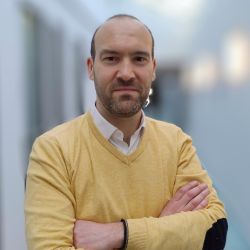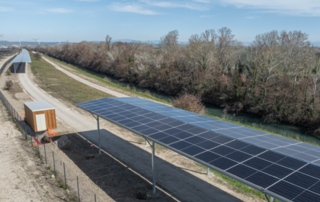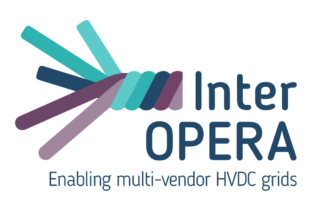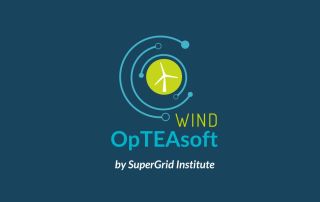Introducing Jean-Baptiste Heyberger, Director of our Architecture and Systems department

As part of our ongoing series highlighting the leadership team at SuperGrid Institute, we are excited to introduce Jean-Baptiste Heyberger. After working for over 20 years on analyse and calculation tools for protecting grids using alternative current (AC), Jean-Baptiste joined our Institute in 2024 to lead our Supergrid’s Architecture and Systems department. This marks a new challenge for him as he will be exploring the world of direct current (DC) and broadening his expertise.
Can you tell us more about your background?
I spent over 20 years at RTE, the French transmission system operator (TSO). For the first 15 years, I primarily worked on the security analysis tools for AC networks. Afterwards, I moved into the field of dynamic calculations, focusing more specifically on electromechanical simulations for network analysis.
Throughout my career, I have contributed to the development of network analysis tools drawing on my background in mathematics. I really enjoy developing and improving existing applications but also formulating new problems and trying to solve them!
What led you to join our management team at SuperGrid Institute?
The fact that I can immerse myself in DC and explore new technical topics is a real success! Within a few months of being here, I felt as if I had discovered the entire other half of the electric network. The methods and ways of reasoning about behaviour are different, and it’s fascinating!
At the same time, I enjoy being able to work with a wide range of companies and to reconnect with R&D which I left behind in the last few years of my career.
It is for sure that DC is another world…
Yes, but fortunately I can draw on my previous experience! It’s essential to understand the AC perspective in order to extend it to DC. Network managers and ecosystem players tend to be AC-oriented since most of the issues they encounter in the field stem from this approach. The two cannot be separated and our methods and analysis tools must continue to evolve.
With my insight into both worlds, I can help bridge the gap between them, supported by a fantastic group of experts! Our team is young and dynamic, and we can easily adapt to meet the new needs of our clients.
What are the main activities of your department?
Our actions focus on the control and protection of DC networks, techno-economic analyses (TEA) and real-time network simulations.
For control and protection, our experts mainly work on Multi-Terminal DC (MTDC) networks and how equipment can interoperate even if it comes from different manufacturers. This work is closely linked to the InterOPERA project, coordinated by SuperGrid Institute.
On the TEA side, we develop tools and methodologies to optimise the integration of renewable energy. For example, when connecting a wind farm, we can advise our clients on the best architecture, drawing on our internal tool OpTEAsoftWind. In a related project, we coordinate the European project HVDC-Wise, which aims to identify the best connexion option for a meshed network in the North Sea.
Finally, our real-time simulation test platforms allow us to test equipment before it is installed on site. This enables us to check that it behaves as expected in the power grid and to minimise risks. As part of the OPHELIA project, we were able to integrate all the controls from the various suppliers involved, ensuring their successful coexistence before carrying out full-scale on-site tests.
You mentioned 3 very interesting projets that SuperGrid Institute is taking part in
Yes, and many more besides! SuperGrid Institute has really grown within the ecosystem in recent years. Our neutrality and extensive expertise in the field make us a strong force, and we have an important role to play.
In your opinion, what will be the biggest challenges for the energy sector?
I think that the biggest challenge will be evolving the current approaches to analysing electrical networks.
The share of power electronics is increasing which changes the traditional behaviour of the grid. The speed of response is developing and structurally transforms the way we analyse networks. We saw this recently with the blackout in Spain. There is also much more communication between equipment which increases the risk of cyberattacks.
We need to be ready to meet the expectations of TSOs and equipment manufacturers on these topics, by developing tools and expertise to support these demands, because things are evolving very quickly. There are plenty of new challenges, nothing is guaranteed, and it’s exciting!
How do you tackle this constant adaptation to your customers’ needs?
We strive to adapt as much as possible to our customers’ needs and to fully understand their challenges so we can provide the best possible solutions. As I mentioned earlier, our team is young, dynamic and flexible and this is one of our strengths.





